Steven Zaillian calls his eight-part adaptation of Patricia Highsmith’s The Talented Mr Ripley a mix of film noir and La Dolce Vita. “I always imagined it in black and white,” he tells Screen.
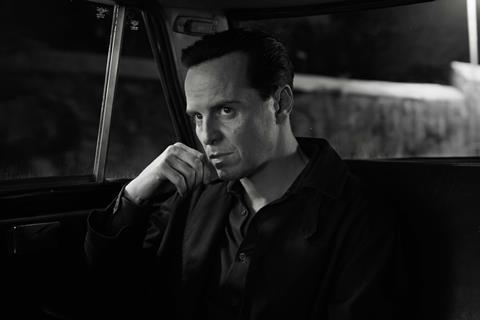
Patricia Highsmith’s 1955 novel The Talented Mr. Ripley has twice been adapted for the big screen — by René Clément as Purple Moon (1960), starring Alain Delon as suave con artist and killer Tom Ripley; and, most famously, by Anthony Minghella in 1999, starring Matt Damon as Ripley, Jude Law, Gwyneth Paltrow and Philip Seymour Hoffman.
Highsmith’s Ripley was the subject of five novels all told, with Ripley Under Ground, the second book, adapted into a 2005 film starring Barry Pepper. The third book, Ripley’s Game, was filmed first by Wim Wenders in 1977 as The American Friend, with Dennis Hopper as Ripley, and again, under the book’s title, in 2002, starring John Malkovich.

Steven Zaillian, the Bafta- and Oscar-winning screenwriter of Schindler’s List, Gangs Of New York, Moneyball and The Irishman, as well as creator of the Primetime Emmy Award-winning limited series The Night Of, had long been a fan of the books and was immediately interested when approached by fellow executive producers Benjamin Forkner, Guymon Casady and Philipp Keel about adapting them for TV — “they came to me about doing a series rather than a film”.
The result is the Showtime/Netflix limited series Ripley, which stars Andrew Scott as the eponymous grifter who is dispatched to Italy by tycoon Herbert Greenleaf (Kenneth Lonergan) to convince his son Dickie (Johnny Flynn) to return home rather than waste his time painting on the Amalfi Coast. Arriving in Atrani, where Dickie lives with girlfriend Marge (Dakota Fanning), Tom inveigles himself into their lives, eventually killing Dickie and his friend Freddie Miles (Eliot Sumner) before moving to Rome and assuming Dickie’s identity.
Filmed on location in Italy over 10 months, Ripley is a spellbinding, leisurely and unique adaptation, anchored by Scott’s cold, clinical performance and Robert Elswit’s sumptuous black-and-white cinematography. In sharp contrast to the sunny climes of previous versions, the camera leans into noir, with deep focus, bold compositions and echoes of The Third Man and early Hollywood Hitchcock, as well as a clever use of the paintings of Caravaggio, both narratively and visually.
The result is what Zaillian dubs a cross between film noir and La Dolce Vita, “in terms of the fashion in Rome,” he explains of the latter. “I wanted the music to reflect that period too, which was something I hadn’t seen in an American film, and it intrigued me.”
Here, the showrunner, who wrote and directed all eight episodes, talks through four key elements that make his Ripley so memorable: the adaptation, the casting, the cinematography and the filming.
The adaptation
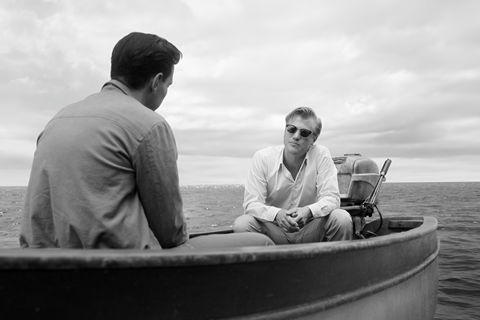
“I read the book before the 1999 movie came out and so everything in [Ripley] is how I felt when I read it initially. [Highsmith’s] books are so well-written and so timeless I think they can be interpreted over and over and over by different people, and they have been. [Purple Noon and The Talented Mr. Ripley] are very good movies. But I wanted to do this in a different way. In terms of story, it is much more faithful [to the book]; in terms of the character, it’s my interpretation.
“When you are trying to condense something down to two hours, you have to make choices that were not made in the book. My idea was to settle into the rhythms of the novel, and I felt the eight hours would allow me to do that. I wanted more of an experience of how you feel when you’re reading a novel — it lasts for a while. It’s not a matter of trying to condense everything into two hours. That’s what I’ve done my whole career, take things and cut them and shape them and try to get them into two hours. This was another approach — let’s let it breathe and feel more like a novel. And when you are doing this long-form format, you can do that.
“The script was about 500 pages. I wasn’t trying to break it up into episodes as I was writing it. I had an outline that broke it into what I thought the episodes would be. In my mind, it was one long story. I always saw it as a long movie.
“The two [murder] sequences were 30 pages long in the scripts, which is basically half a movie. That was another reason I wanted to do this — I thought it would be interesting to try to do these kinds of scenes you can’t do in a two-hour film that felt like they were [happening] in real time and really showed how hard it is to get rid of a body. And there is no dialogue, so it’s all visual storytelling. It was something I was looking forward to doing from the time I wrote it.”
The casting
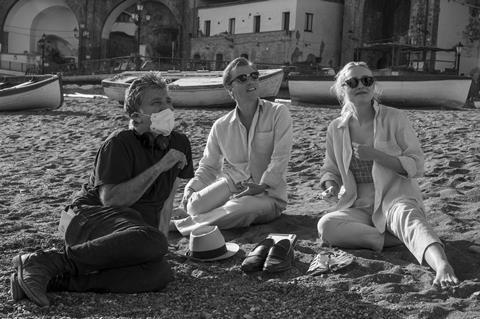
“In the book, Tom was 25, and when I first talked to Andrew about it, he was 40 and looked about 30. But I felt that in this story, the idea of a father being worried about his son wasting his life in Europe maybe made more sense in 1955 than it does now. So I felt the characters of Dickie and Tom being older would be good for the story. Dickie is old enough to know better. And Tom has been a petty crook for long enough to be rather desperate to do something else with his life. At 25, they seemed too young to me.
“I had seen Andrew in a couple of things and was just captivated by him. I thought he had great range — he could play very charming, he could play sinister, he played Moriarty in Sherlock, and I just had a feeling he would be good for this.
“In a way he had to change everything about himself — he’s Irish, he had to play American; he had to speak Italian, which he doesn’t speak; he had to play rather sinister, which is not his nature, he’s a very nice guy. He brought so much to it. In the first five episodes, he is in every scene. That on its own is quite demanding for an actor.
“And in many of the scenes throughout the show, he is by himself. He doesn’t have the benefit of playing with somebody else, reacting to somebody else. And he must be watchable, he has to express himself in a way we understand what he is thinking. Andrew could do all that.
“I wasn’t aware of Johnny before he auditioned, and I felt his audition was so good and was so different from what a lot of the other actors were doing in theirs. Many were playing him as a kind of entitled brat, and Johnny was very sympathetic and had this easy manner about him, the way people with money do. But there was something vulnerable underneath it, and I thought that would be good for the character.
“Eliot Sumner did the same thing. Eliot auditioned. Philip Seymour Hoffman gave such an indelible performance [as Freddie Miles in Minghella’s movie], that I guess it might be hard for actors not to think of him that way. Plus, the character was described in the book as being a rather obnoxious, rich American. Eliot did something different. What Eliot did was surprising.
“I think Dakota gives an incredible performance, a very subtle performance. The one film I saw of hers at just the right time when I was thinking about who to play this part was Once Upon A Time In Hollywood. She had one scene in it that was so striking, I said, ‘I don’t know who that is, but she’s incredible’. I was surprised to hear that it was Dakota. I didn’t recognise her. I found that performance so striking I asked her to do this.”
The cinematography

“I always imagined it in black and white, even back when I read the book, so that wasn’t a tough choice. I did feel that because of the period, because of the film noir aspects to the story, it would be good. That decision was made very early on. [DoP Robert Elswit] loved the idea. He had done at least one other film in black and white. Then I had a lot of time to think about everything with this series because I had written it and we had started scouting when Covid hit. I had about a year waiting for when we could start shooting, which I spent doing production design work and mapping out how the thing should look. I did a lot of research in terms of photography from the period. I had taken a lot of photographs when we initially started scouting, getting the overall look in my mind.
“We shot in colour but didn’t have colour monitors on the set. The photographs I took, I used them as kind of shot lists, sort of photographic storyboards. They were in black and white. Our monitors were black and white. Our dailies were black and white. The editors never saw the footage in colour, except when we were doing visual effects.
“We didn’t look at any [specific] films [as reference]. It wasn’t like [we said], ‘Let’s do a shot that looks like The Third Man or Hitchcock.’ Maybe one shot of a shower head — that was definitely Hitchcock. The only film I kept seeing in my mind — and it wasn’t something I discussed with Robert, but it was something I kept feeling at locations we would go to — was [Bernardo Bertolucci’s] The Conformist; the austerity of The Conformist.”
The filming
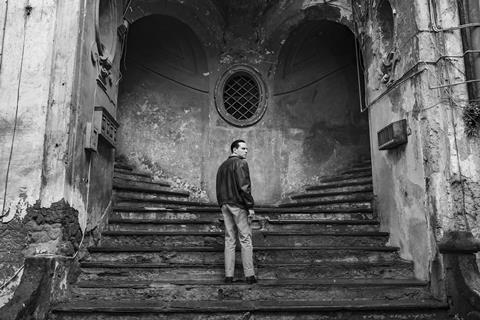
“When Patricia Highsmith wrote the book in 1955, Italy was not a tourist destination. We had a lot of photographs from the time, 1950s and early ’60s. There is one of Truman Capote in Positano and there is nobody there. The beaches are empty. There’s not a bunch of umbrellas on the beach. There were tourists on the Amalfi Coast but they were Italian tourists.
“We shot for about 10 months and had about six months of pre-production, which was all spent mainly scouting locations, choosing locations, getting them ready. We shot in Rome, Palermo, Naples, Venice, Anzio, Capri, the Amalfi Coast. We were all over the place. We shot before Italy had reopened in terms of tourism so we basically had the country free of tourists, which made it easier to shoot. But we were living in a very austere kind of Italy in 2021, which felt right for this story. Empty streets lent themselves to the film noir feeling.
“We scouted locations multiple times. And each time we would find something. The places [production designer] David Gropman and I found would suggest how we should shoot them.
“I mean, the staircases, the steps and the stairs everywhere, that was not written into the script. It was something that happened because they were there, and they became a kind of a motif.
“But these extraordinary locations that weren’t often used in films would always have something about them that was striking, that we could use in the shot.
“I did not want monuments in the show, because it wasn’t meant to be a tourist’s version of Italy. [And so with] Rome you don’t shoot at the Colosseum, you don’t shoot on the Spanish Steps. You shoot on a side street — a real street, not a tourist destination. There is a scene that takes place next to the Spanish Steps, but I don’t know people even notice it because we are not shooting the obvious angles people take their tourist photos from.
“There’s one shot of the Colosseum, out of focus in the background of a scene of Tom driving in his little Fiat with a corpse next to him. That’s the only time you see the Colosseum. You don’t see it as a tourist, you see it in passing. That was the ethos of the whole approach to this show.”
The nominations-round voting period for the 76th Primetime Emmy Awards is open from June 13-24.




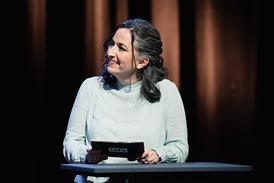



















No comments yet